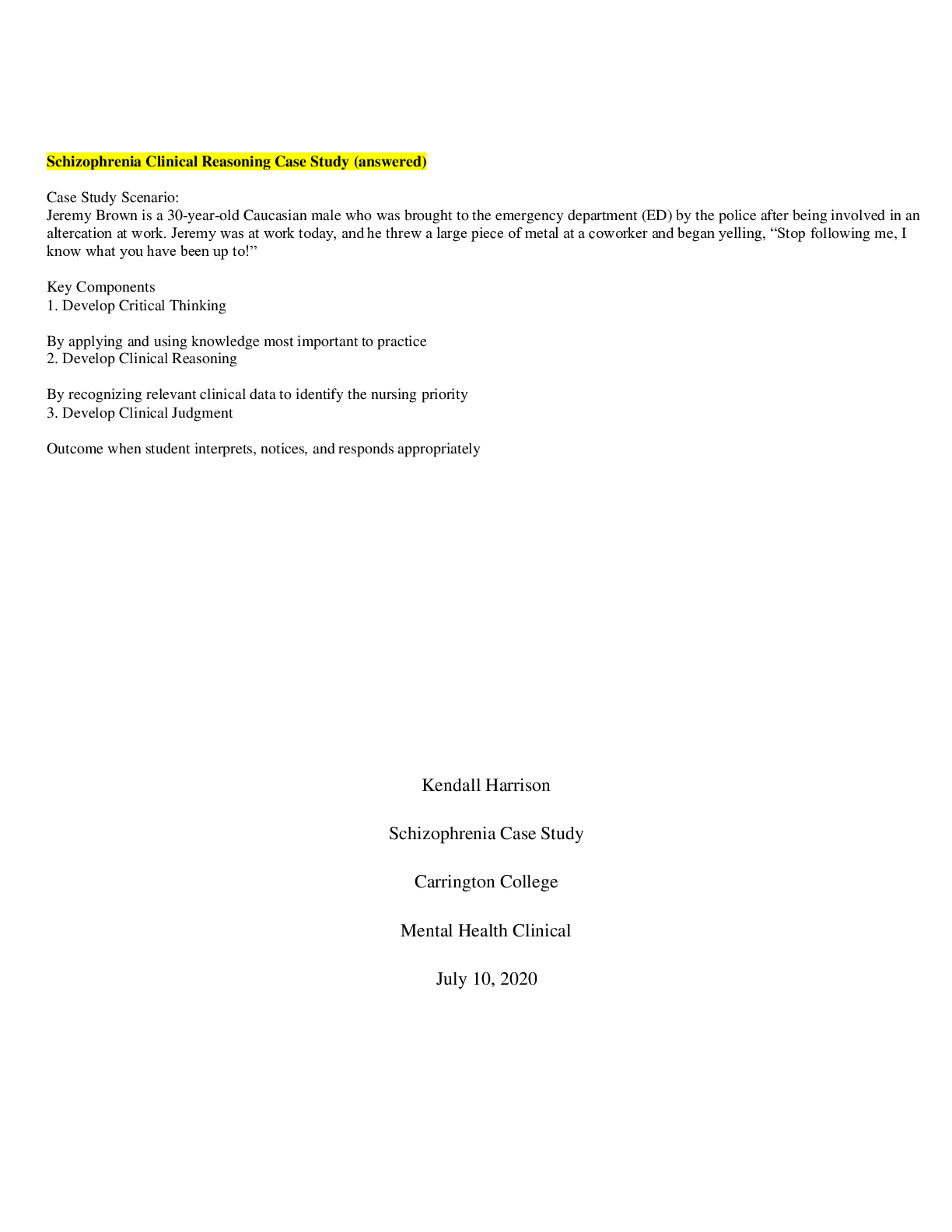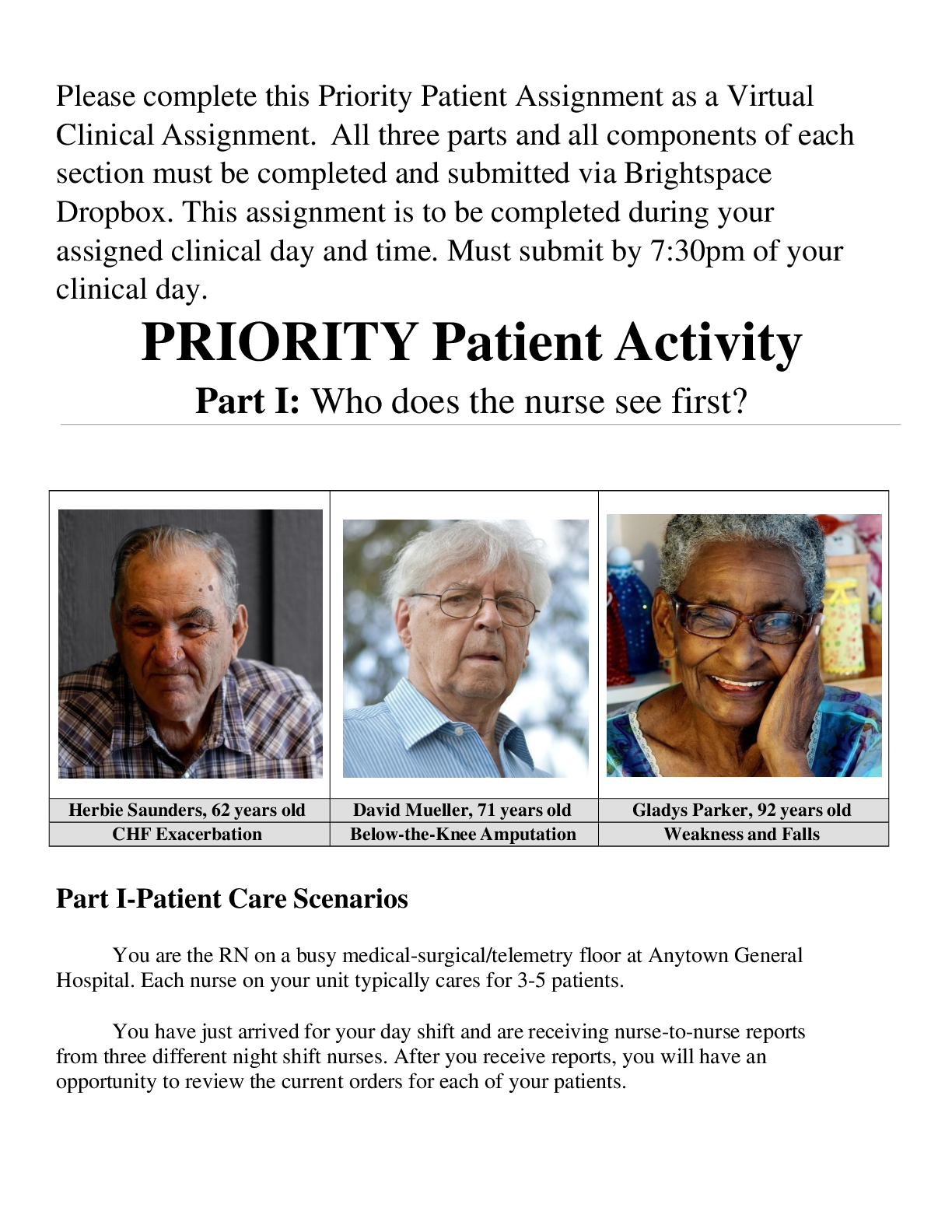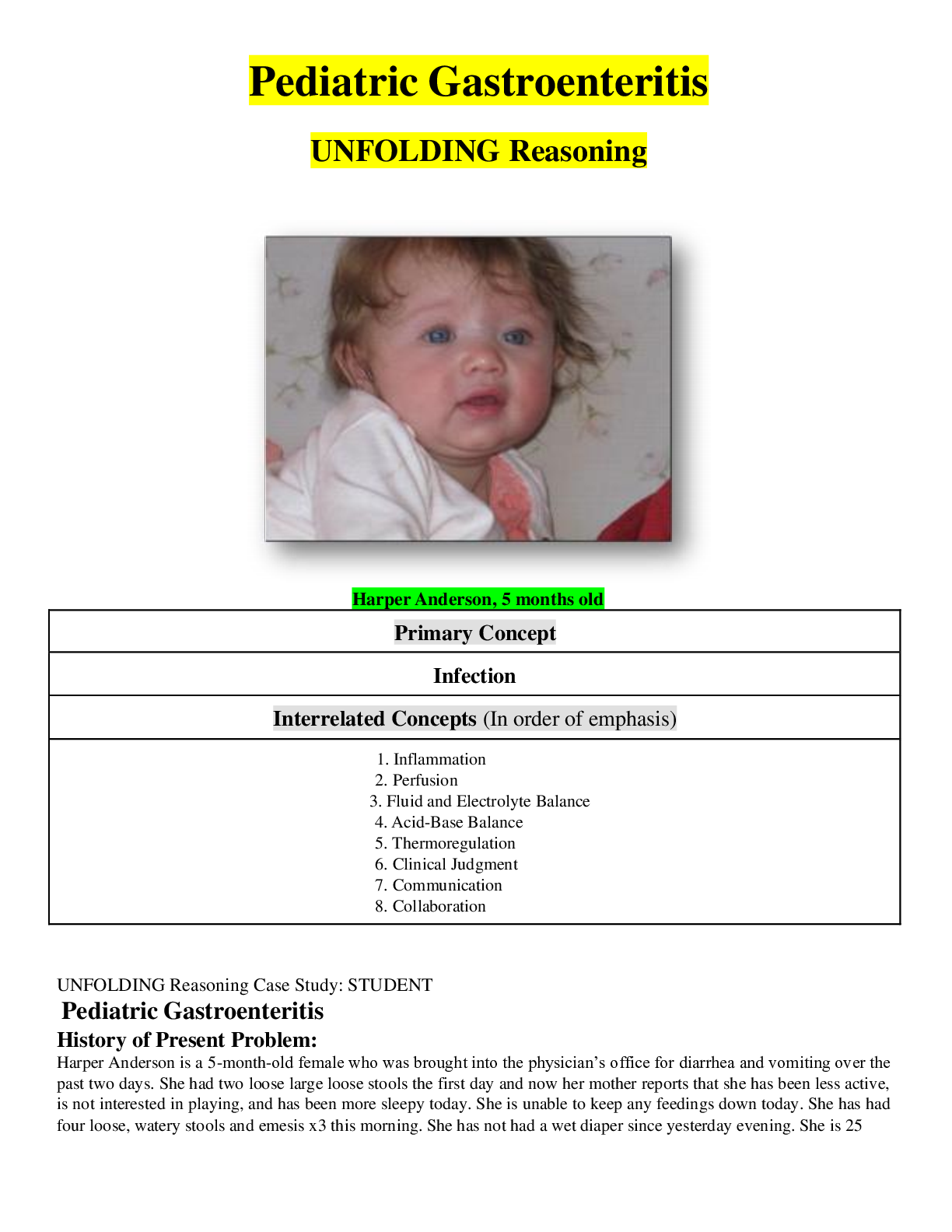*NURSING > vSim For Nursing > Vernon Watkins |VSIM Elaboration| Advanced Practice Care of Frail Elders (NURS 6540) (All)
Vernon Watkins |VSIM Elaboration| Advanced Practice Care of Frail Elders (NURS 6540)
Document Content and Description Below
Patient status - ECG: Sinus tachycardia with signs of pulmonary hypertension. Heart rate: 103. Pulse: Present. Blood pressure: 149/89 mm Hg. Respiration: 24. Conscious state: Appropriate. SpO2: 95%.... Temp: 99 F (37 C) 1:11 You identified the patient. To maintain patient safety, it is important that you quickly identify the patient. 1:22 You asked if the patient was allergic to anything. He replied: 'Yes, I'm allergic to penicillin.' 1:27 You looked for normal breathing. He is breathing at 24 breaths per minute. The chest is moving normally on both sides. 1:58 You attached the pulse oximeter. It is a good idea to monitor the saturation and pulse here. This will allow you to reassess the patient continuously. 2:09 You checked the radial pulse. The pulse is strong, 105 per minute and regular. It is correct to assess the patient's vital signs. 2:10 Patient status - ECG: Sinus tachycardia with signs of pulmonary hypertension. Heart rate: 105. Pulse: Present. Blood pressure: 150/89 mm Hg. Respiration: 24. Conscious state: Appropriate. SpO2: 94%. Temp: 99 F (37 C) 2:38 You measured the blood pressure at 150/88 mm Hg. It is appropriate to monitor the patient by measuring the blood pressure. 3:03 You sat the patient up. It is correct to do so. 3:10 Patient status - ECG: Sinus tachycardia with signs of pulmonary hypertension. Heart rate: 107. Pulse: Present. Blood pressure: 150/89 mm Hg. Respiration: 24. Conscious state: Appropriate. SpO2: 93%. Temp: 99 F (37 C) 3:13 You checked the temperature at the mouth. The temperature was 99 F (37 C). 3:34 You attached a 3-lead ECG. It is correct to attach the monitor to the patient. 3:47 You assessed the patient's IV. The site had no redness, swelling, infiltration, bleeding, or drainage. The dressing was dry and intact. This is correct. Assessing any IVs the patient has is always important. 4:00 You asked the patient if he had any pain. He replied: 'It hurts to breathe and I have pain in my leg' He also told you that he had chest pain. 4:06 You asked: How bad is the pain? He replied: 'Not too bad, it's about a 3.' 4:10 Patient status - ECG: Sinus tachycardia with signs of pulmonary hypertension. Heart rate: 108. Pulse: Present. Blood pressure: 149/90 mm Hg. Respiration: 24. Conscious state: Appropriate. SpO2: 92%. Temp: 99 F (37 C) 4:14 You asked the patient if he needed anything for the pain. He replied: 'Yes. That would be great.' 4:51 You placed a nasal oxygen cannula. This was part of your orders. 4:52 You turned the oxygen on. [Show More]
Last updated: 2 years ago
Preview 1 out of 4 pages

Buy this document to get the full access instantly
Instant Download Access after purchase
Buy NowInstant download
We Accept:

Reviews( 0 )
$11.00
Can't find what you want? Try our AI powered Search
Document information
Connected school, study & course
About the document
Uploaded On
May 26, 2021
Number of pages
4
Written in
Additional information
This document has been written for:
Uploaded
May 26, 2021
Downloads
0
Views
75



.png)










